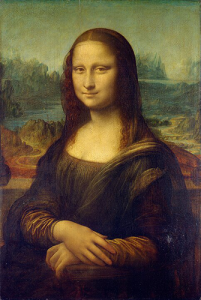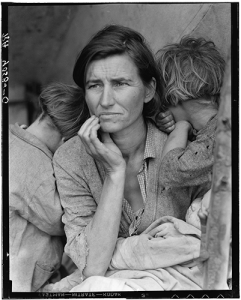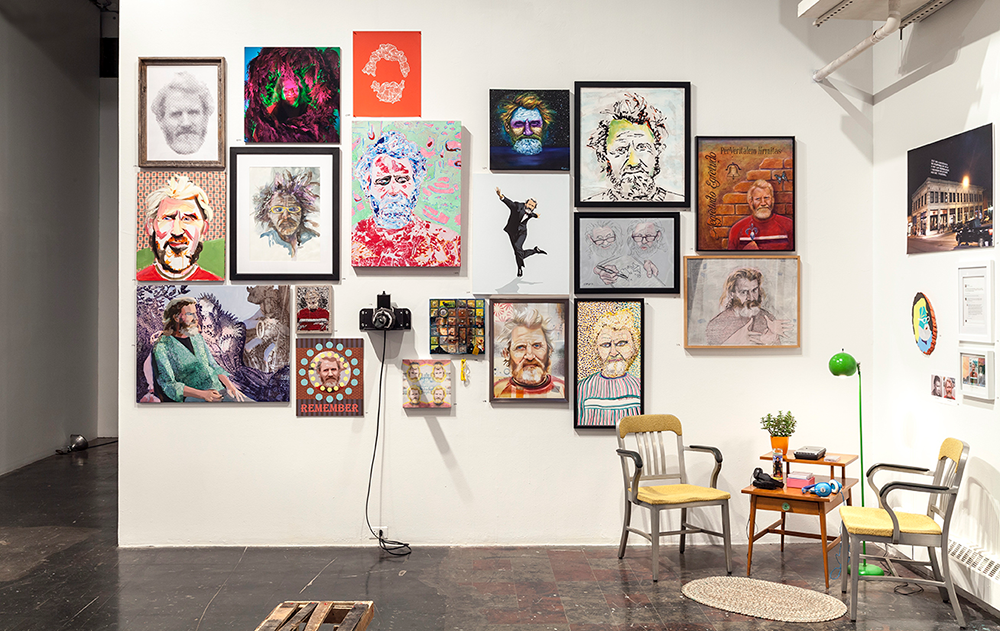7 What is a Profile Essay?
At its core, a profile essay is a written portrait of another person. What you’re trying to do is capture something about that person and make them come alive for your readers. What you choose to focus on and how you choose to represent that person is almost entirely up to you as the author, but the end goal is the same: to help your reader “see” the subject better than they did previously.
While I’m sure you’ve heard the word “portrait” before,[1] you might not have ever really considered how we define what a portrait is. Portraiture is a specific genre of art that has certain characteristics and expectations, just like there are specific characteristics and expectations for each genre of writing. Portraits are typically images of a single person who has been captured in a vertical orientation (taller image, such as how you usually look at your phone[2]). Most of the time, a portrait doesn’t usually try to capture the subject’s entire body—just their head and shoulders or their torso and face. Also, you usually find that the purpose of creating a portrait is to try and capture who that person is in a single image.
 When this is done well, you are left with truly memorable images of the subject. There are some incredibly well-known examples of portraits throughout history. The Mona Lisa, painted by Leonardo da Vinci, is a classic example of a portrait. A lot has been said about the pose, the setting behind her, the enigmatic smile, and so on. Another iconic portrait from more recent times is
When this is done well, you are left with truly memorable images of the subject. There are some incredibly well-known examples of portraits throughout history. The Mona Lisa, painted by Leonardo da Vinci, is a classic example of a portrait. A lot has been said about the pose, the setting behind her, the enigmatic smile, and so on. Another iconic portrait from more recent times is Migrant Mother, a photograph made in 1936 by Dorothea Lange, which captures the image of a destitute mother and her children during the height of the Great Depression. She had just sold the tires off her truck in order to buy food for her children, which probably meant that they could not migrate to find more work at different farms as each crop came into season. Her concerns and worries are clearly etched on her face, with the distractions of all of her mortal concerns pulling her attention away from the kids that are small enough to depend entirely on her and her efforts. With the weight of the world literally on her shoulders, she looks far older than her rather young 32 years of age.
Migrant Mother, a photograph made in 1936 by Dorothea Lange, which captures the image of a destitute mother and her children during the height of the Great Depression. She had just sold the tires off her truck in order to buy food for her children, which probably meant that they could not migrate to find more work at different farms as each crop came into season. Her concerns and worries are clearly etched on her face, with the distractions of all of her mortal concerns pulling her attention away from the kids that are small enough to depend entirely on her and her efforts. With the weight of the world literally on her shoulders, she looks far older than her rather young 32 years of age.
One thing to note is how differently these two portraits have captured their respective subjects. The artists used two different media—oil paints and photographic film—with two different representations—one in color, one without—and two different styles—one in the style of the Italian Renaissance, and one photographic reproduction—to portray the subjects to their audiences. Both are perfectly valid as portraits.
When you write your profile, I don’t expect you to represent your subject exactly the same way or from exactly the same angle as your classmates. In fact, if two of my students profiled the same person, I imagine that the profiles they produced would be quite different from each other since each student would see the subject from their own perspective and would focus on different aspects of the subject’s life.
This reminds me of a 2016 art exhibit called John Riegert, in which one artist invited over 250 other artists to create a portrait of the same subject: John Riegert, the owner of the gallery where the exhibit was hosted. Over 100 of them held portrait sessions with Riegert, while others worked from the same photo of him wearing a red sweater.  Each artist chose their medium and style, and the choices were incredibly varied. Some worked in paint, others in photography, still others in sculpture. Some worked with audio recordings; some made videos. One artist even installed a steel I-beam that was partially coated in cement and called it a portrait of Riegert. The point here is that, as long as you comply with the requirements of the essay, you have an incredible variety of possible avenues that you can follow as you portray your subject.
Each artist chose their medium and style, and the choices were incredibly varied. Some worked in paint, others in photography, still others in sculpture. Some worked with audio recordings; some made videos. One artist even installed a steel I-beam that was partially coated in cement and called it a portrait of Riegert. The point here is that, as long as you comply with the requirements of the essay, you have an incredible variety of possible avenues that you can follow as you portray your subject.
 The next question, then, is who you might write about. This is, of course, up to you. Some students choose to write about people they already know well, like family members, mentors, best friends, trusted coaches, and so on. Others choose to write about someone they don’t know very well, like a new roommate or co-worker, someone who works in the field they want to enter, a respected local business owner or political leader, or even a family member that they’re not very close to.[3] There are no limits here. If you can look at someone’s life and say to yourself, “Wow. This person is really interesting,”[4] then that person is likely a good subject for a profile.
The next question, then, is who you might write about. This is, of course, up to you. Some students choose to write about people they already know well, like family members, mentors, best friends, trusted coaches, and so on. Others choose to write about someone they don’t know very well, like a new roommate or co-worker, someone who works in the field they want to enter, a respected local business owner or political leader, or even a family member that they’re not very close to.[3] There are no limits here. If you can look at someone’s life and say to yourself, “Wow. This person is really interesting,”[4] then that person is likely a good subject for a profile.
In a nutshell, then, your profile subject will either be a person that is clearly unique in some way, or they will be a normal person that you are helping us see in a new light. Of course, there are people in this community that are extraordinarily different from everyone else. Maybe they have a weird or different job or hobby. Perhaps they have a unique upbringing or background. Or they collect something weird. I don’t know. There’s just something clearly identifiable about them that would make them fun to write about. On the other hand, they might seem to be a normal, everyday person, but there might be something surprising about them that you can discover through your research and interview. It doesn’t matter which way you choose to go in your profile. Both options can produce really enjoyable profiles.
- I mean, “selfie” is short for “self-portrait” after all. ↵
- In fact, when an image or paper is oriented so that it is taller, that is usually called “portrait” orientation as opposed to “landscape,” which is an image or page that is wider than it is tall. ↵
- Like a great-grandparent or second cousin. ↵
- Or unique or surprising or funny or whatever. ↵

